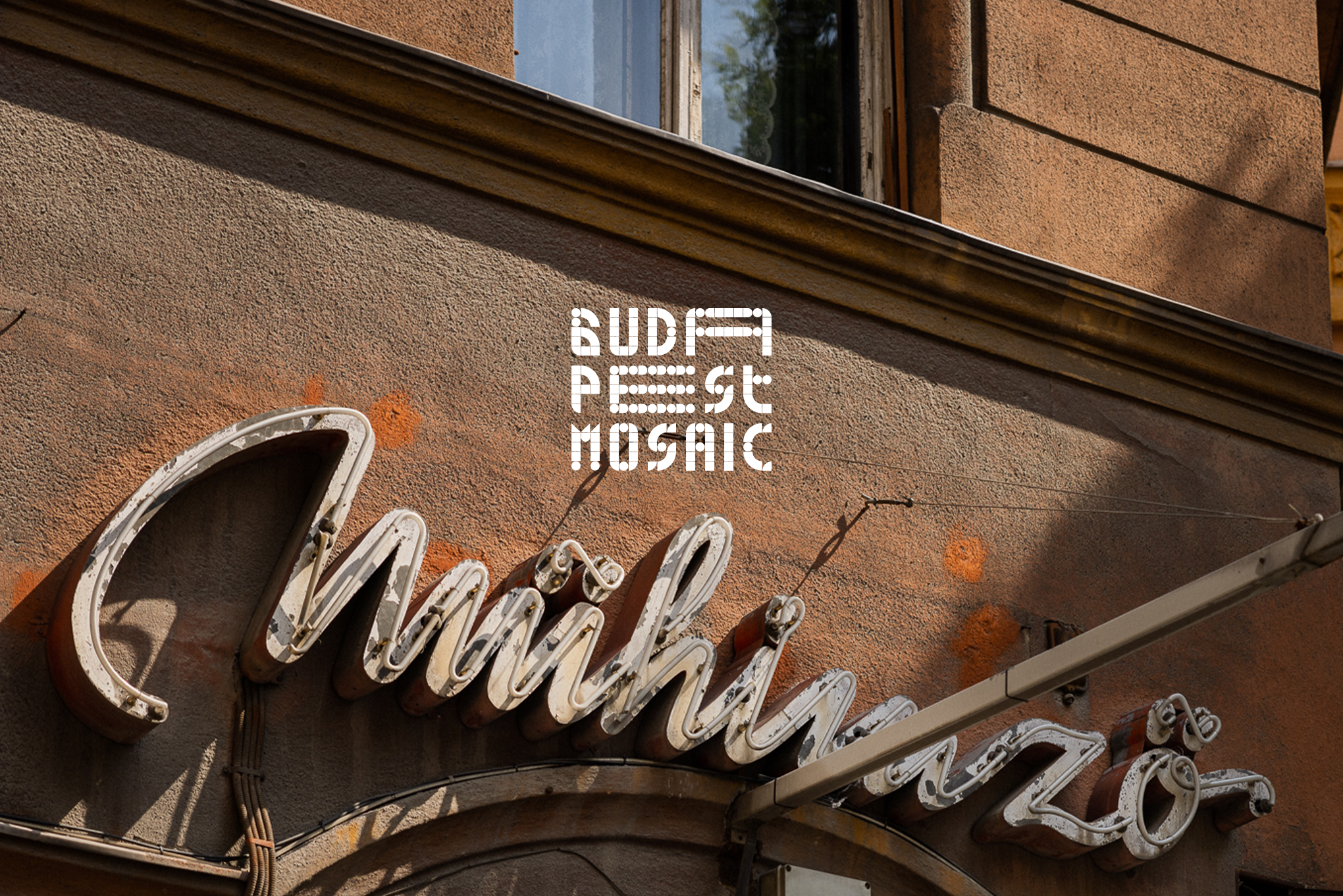The urban fabric is not just buildings, streets, and public spaces. Street signs, murals, public art, and various visual elements are all part of creating a more liveable city, but they also shape its identity. In the latest episode of our Budapest Mosaic series, we take a look at some of the graphic elements that shape the city’s identity—exploring the urban diary of graphic designer Luca Patkós.
In our latest series of articles celebrating the 150th anniversary of Budapest, we explore the city’s various layers, that have overlapped or overwritten each other time and time again. We present urban structures, public landmarks, and details that have shaped the Budapest landscape. Mosaics of urban history in the intersection of a topic, an expert, and a site. Part two!
One of the identity-forming elements of Budapest’s streets is the neon signs adorning the walls of houses, which once lit up the city at night as symbols of socialist modernity and prosperity. The capital began to glow in the 1920s, and by the early 1970s, thanks to the city government’s ‘neonification program’, some 19,000 neon signs were advertising the different names of shops or the types of goods on sale. Neon signs were clearly at their peak during this period, before declining in popularity. As Luca Patkós pointed out, according to a 1987 article, there were 2,500 neon signs, but today there is only a fraction of that, about 100, in the city, and only a few of them are still in operation.
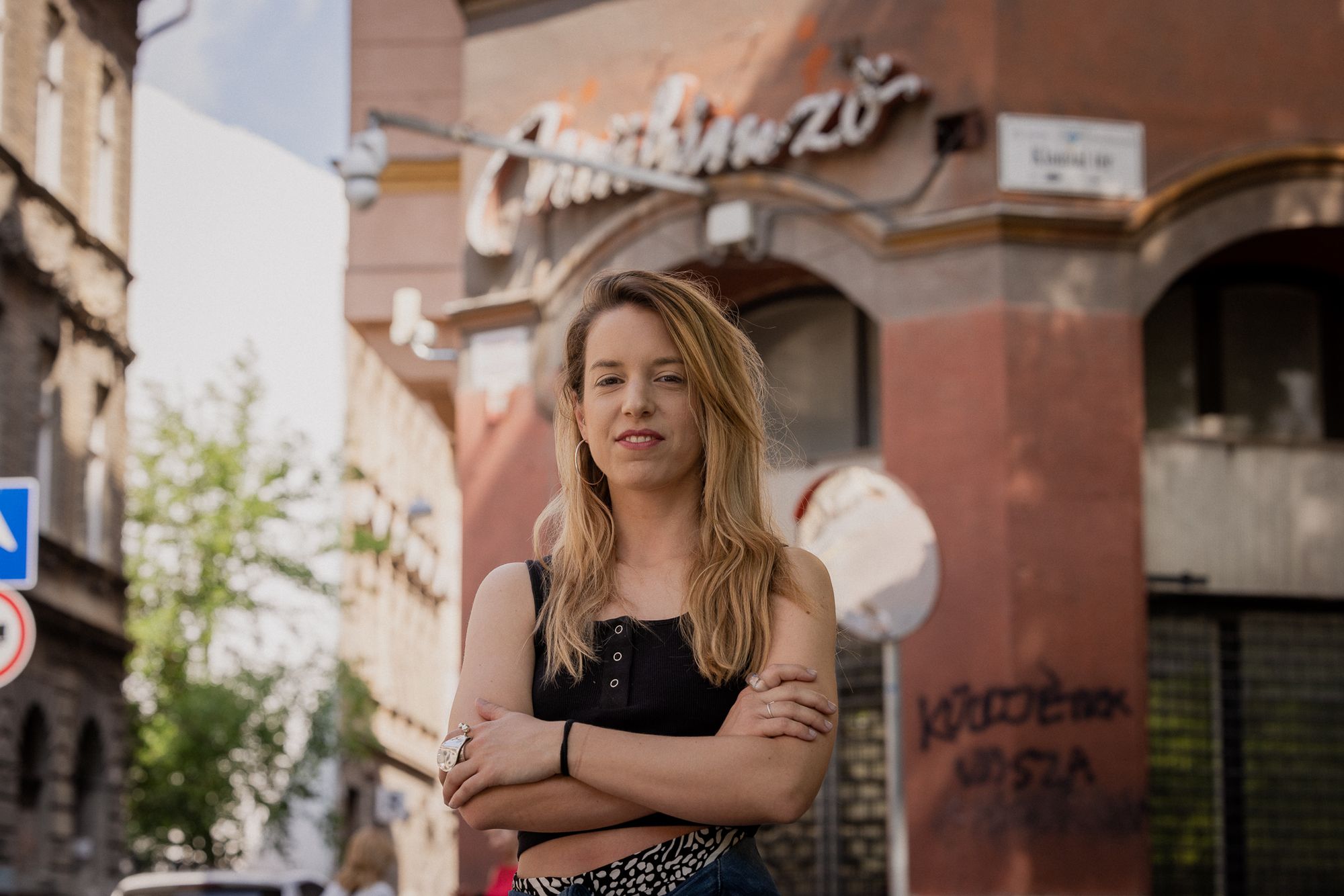
Graphic imprints of the past
Designer Luca Patkós’ fascination with neon signs began a few years ago—or as she puts it, she is an ardent guardian angel of neon, dealing with these industrial art relics. Luca’s professional work currently supports the team at Flying Objects, and her brand embracing the neons of Budapest was launched in 2019, called Cső! Legyél te is neonmentő (Sup! Become a neon rescuer yourself—the Transl.). More specifically, it was the work of the Neonon group that inspired her to dive deeper into the world of neons. “The Neonon team started saving neons back in the early 2000s and they first came up with the idea of a neon museum in Budapest. In my thesis I designed the identity of this—unfortunately still—fictitious museum, which included a real neon. János Bacskai from Polisign helped me create the neon, and I have worked with him several times since then,” she said.
Before it was clear what form the Cső! would take, Luca tried to guide the neons’ fate from various directions. After graduating, she felt that there was still a lot of potential in the field, so she was commissioned by the ELTE Institute of Library and Information Science to work on the graphic design of an online neon map of Budapest created by the Neonon Group, and then, in collaboration with visual artist Isabel Val, she made an English-Hungarian guidebook and a series of limited edition screen-printed posters. As a forerunner to Cső! products, the two artists also used glow-in-the-dark paint to evoke the neon effect. “Throughout all the projects, I was thinking about how to do something for neon—that’s how I came up with the idea for Cső!, a poster collection with the proceeds going to the renovation of the remaining neons,” Luca pointed out.
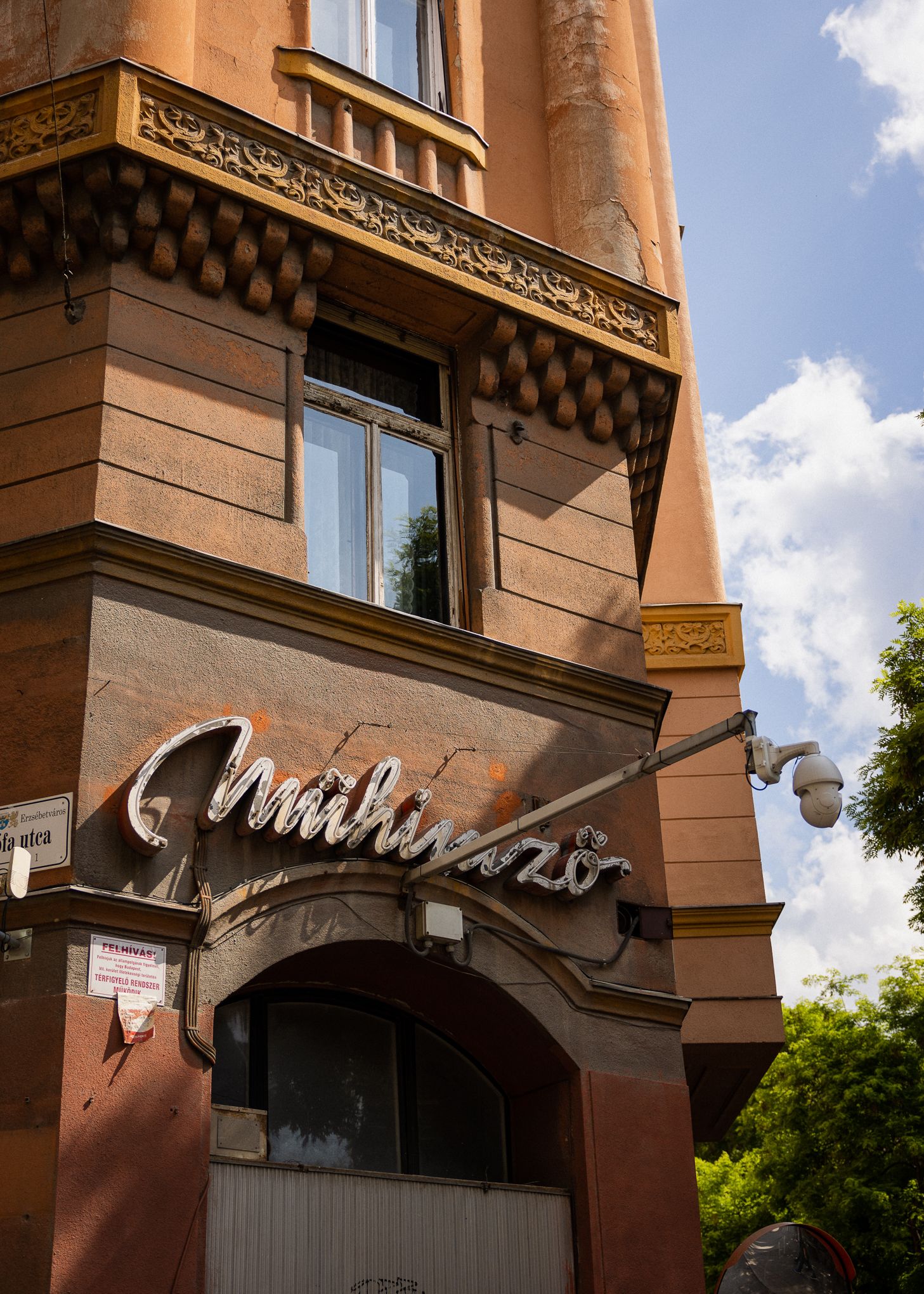

The project has also included the restoration of a Fürdő (Spa), a Csemege (Delicatessen), and an Élelmiszer (Grocery) neon signs, as well as a long-standing work on a Látszerész (Optician) sign. The latter is also special because it dates back to before the 1970s, as it appears in a photo taken before 1956. As Luca explained, although the Cső! posters proved successful, the renovation of the neons was not nearly as easy. “The owners of the remaining neons in the city are older and distrustful. Unfortunately, many of them have had bad experiences with ‘neon hunters’ who just wanted to take down neons for either money or free. I have had a ‘Cipő’ (Shoes) sign literally taken down in front of me on József Boulevard—it went to the neon museum in Warsaw, which bought up several Hungarian neons to exhibit. As there is no similar museum or effort in Hungary, the principle of ‘first come, first served’ applies,” she said. She added that although the fascination with neons and the retro wave is still going strong, they will never be as popular because of more cost-effective techniques. “Apart from a few collectors who dismantle them for their own use or to sell, there are no organized neon-saving activities today,” she noted.
The Műhímző (Embroidery) neon decorating the façade of the empty building on the corner of Klauzál Square and Kis Diófa Street has suffered a similar, neglected fate. As Luca has pointed out, the shop that used to belong to it has been closed for a long time, so it’s admirable that we can still find it in its original place. “The CCTV camera underneath may have contributed to this. I used to pass this area a lot and was always worried to see if it was still there,” she added. The sign, incidentally, advertised the shop premises of the Embroidery and Flag Making Industrial Association, where workers embroidered the text customers wanted on flags or bags. In keeping with the craftsmanship, the neon design evokes handwriting. “I really like the letter ‘M’ in neon: it’s a dynamic and nice inscription. This handwriting style was a signature solution. An amusing part of the background to the neon is that there were some people who objected to the lettering because it didn’t resemble the handwriting that children learned at school. So they thought it was a hard-to-read sign that spoiled the overall image of the city,” said Luca. She then added that although as a designer she is most inspired by the visual world of the 60s and 70s, her fascination with neon is also linked to its fun backstories. “Back in 1968, a lot of neons were installed in the city controlled by the government, so a lot of them didn’t work properly: there were a lot of complaints about them and you can read about a lot of lawsuits from residents. One resident, for example, explained his wife’s shyness and reluctance to fulfill her ‘marriage obligation’ by the bright light shining into their apartment. Or in another lawsuit, a taxidermied pet in the apartment had too many bugs flying on it, also because of the neon’s attractive light,” she explained.
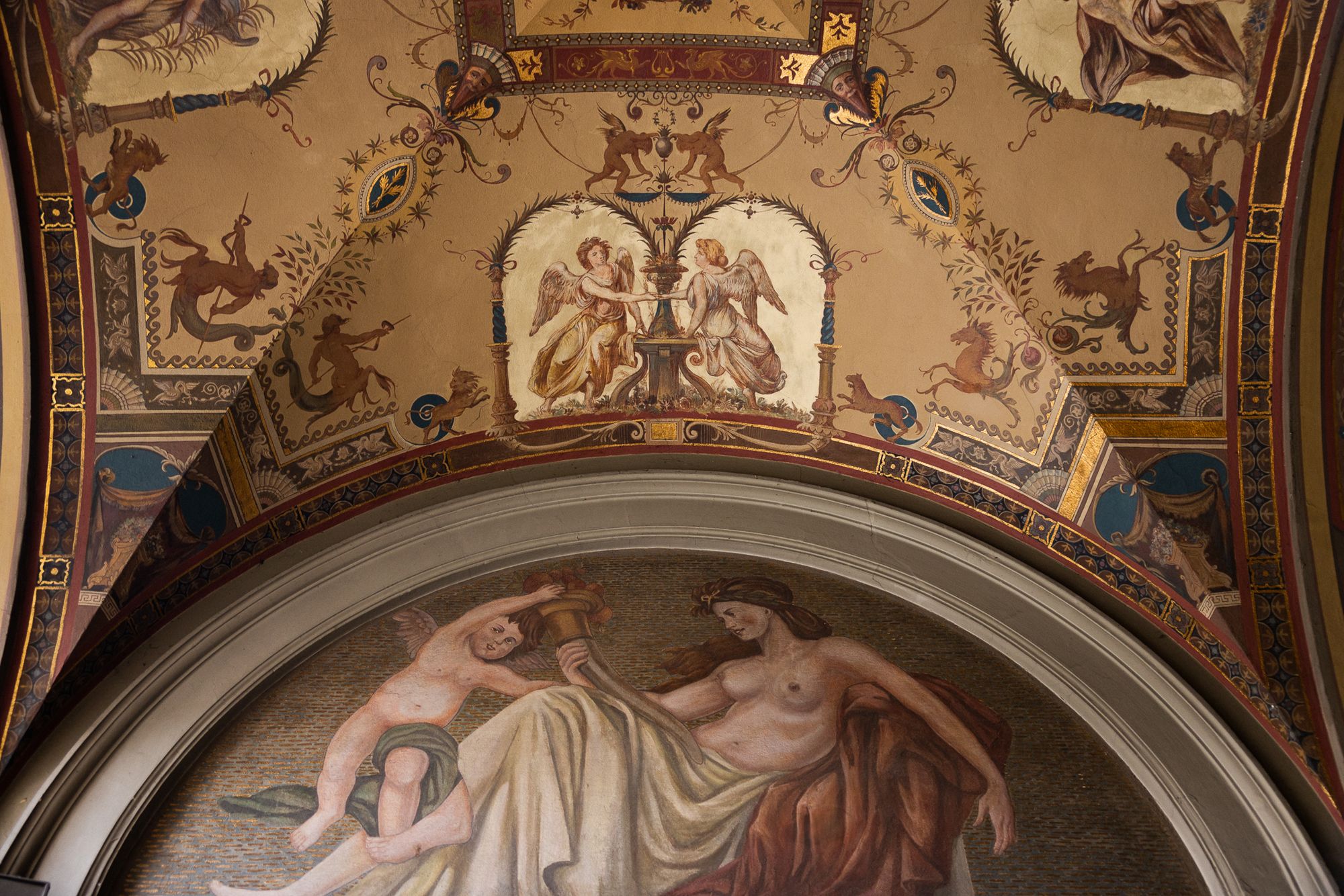
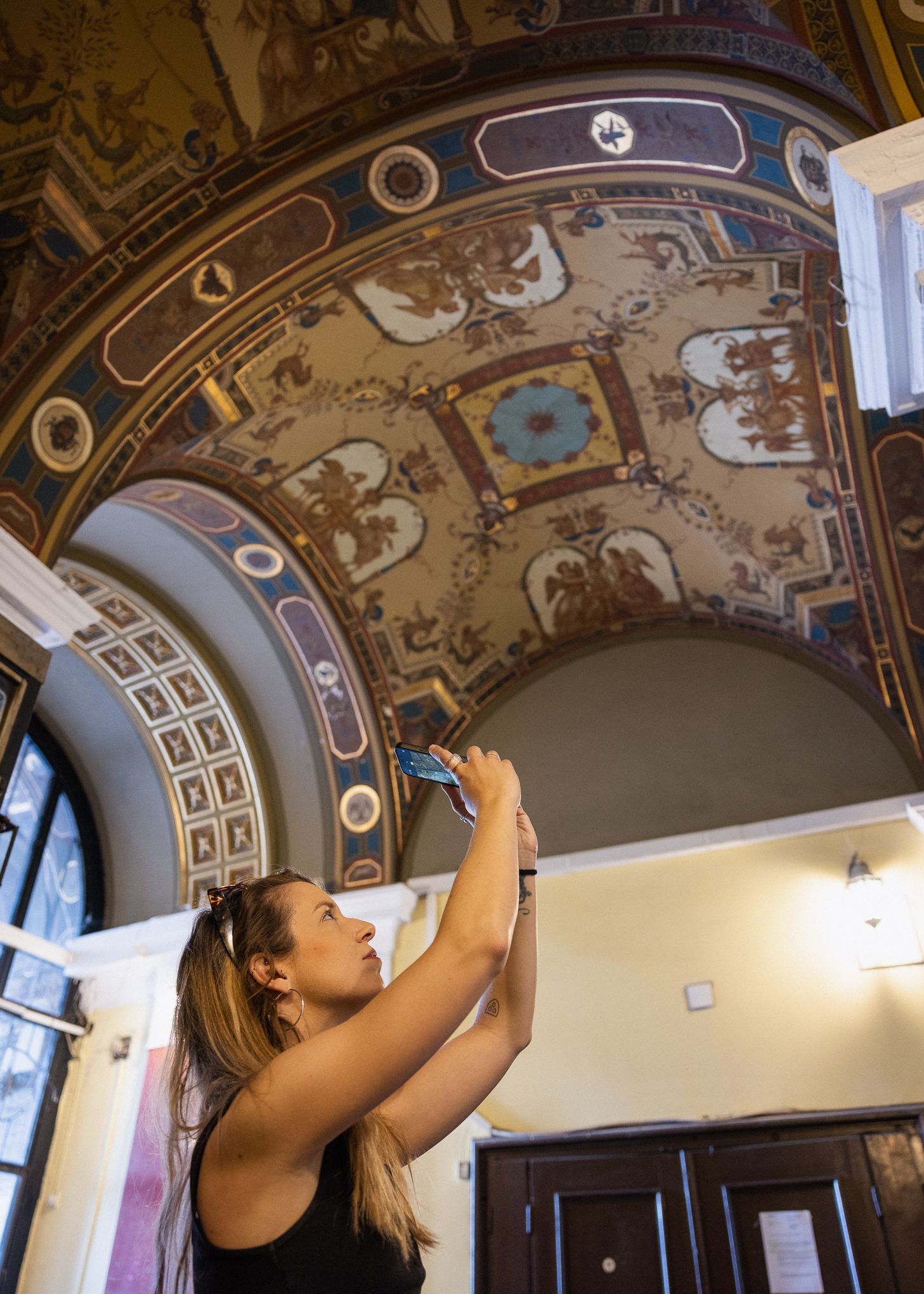
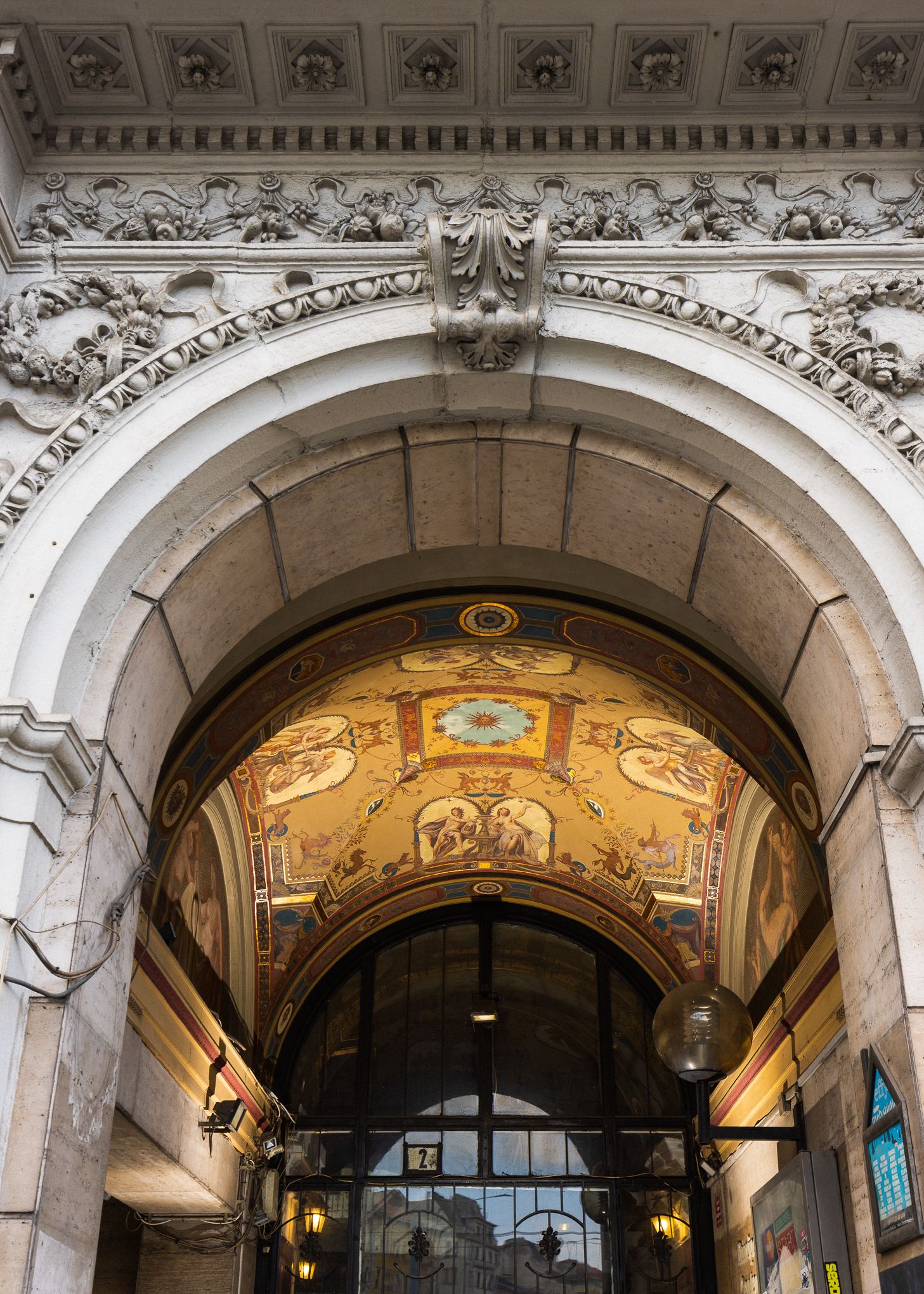
Beyond neon: artworks in unexpected urban spaces
Luca is also fascinated by the way in which the imprints of different eras come together in an urban streetscape, so as a graphic designer, she is not just looking at neon. One such example is the details of the László House on Blaha Lujza Square, or more precisely on the corner of Rákóczi Avenue and József Boulevard. As Luca pointed out, in the seventies several giant neon signs were placed here: “The slogans of Közért (Grocery) and Daru cigarettes were hung here. I regret that I never got to see them live”. The László House was designed by István Kiss, who also designed the János Hospital, the Baross Street maternity clinic, and several court buildings, as a reform attempt to create new types of tenement houses in 1895. The building is interesting for its tower, its semicircular façade, its interior and exterior sculptures, but above all for the Lotz frescoes. The works of the painter Károly Lotz cover the staircase of the Hungarian National Museum and the ceiling of the Opera House’s auditorium, among others, but the work of one of the most important representatives of Hungarian mural painting can also be admired here at any time, under the arcade of 2 József Boulevard, in the entrance hall. “I lived at Blaha Lujza Square for a while and once I happened to look up from the subway, where I hadn’t expected to see this sight at all. It’s a good example of how you can find classic beauty in areas and places of the city where you just want to pass quickly,” says Luca.
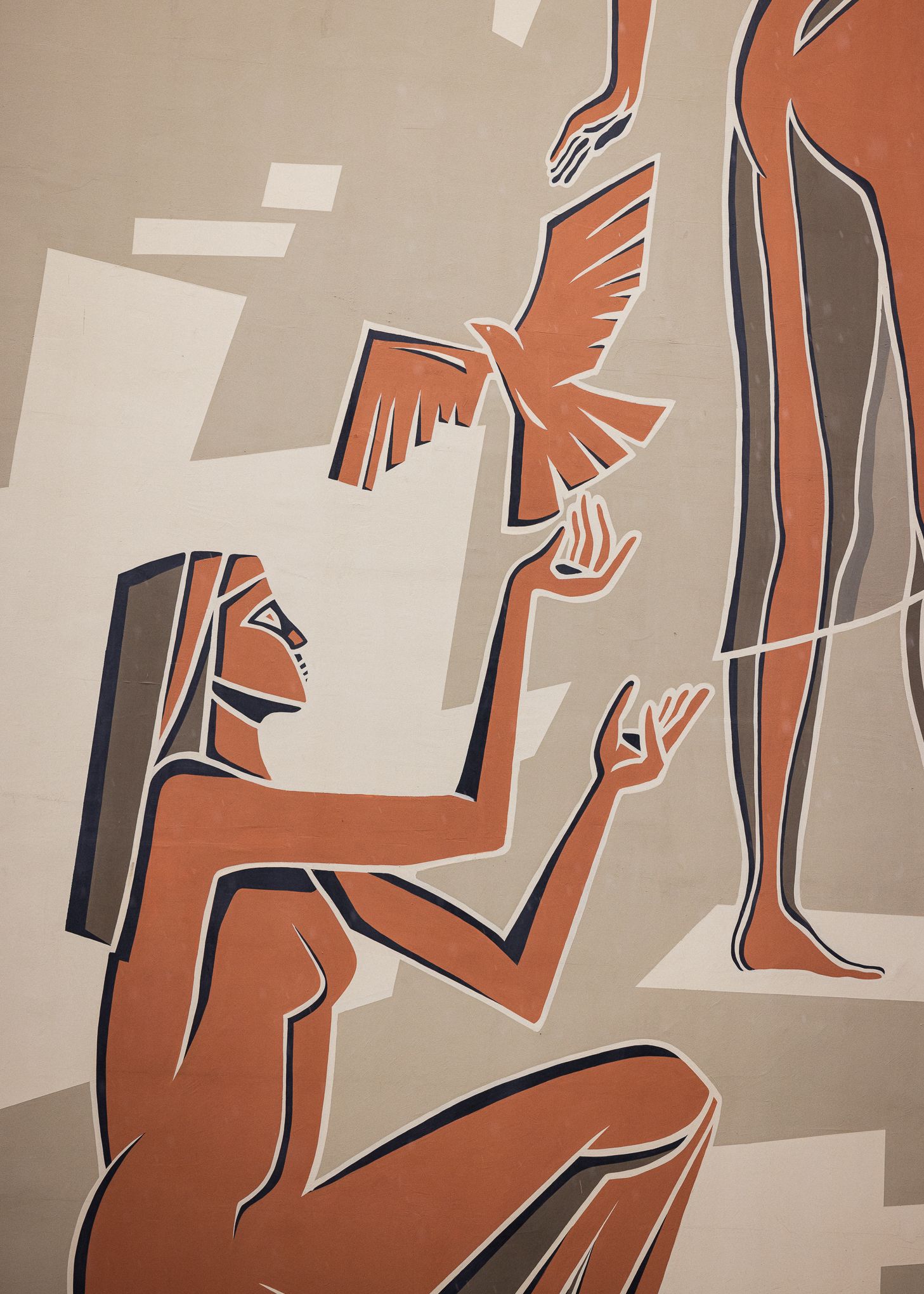
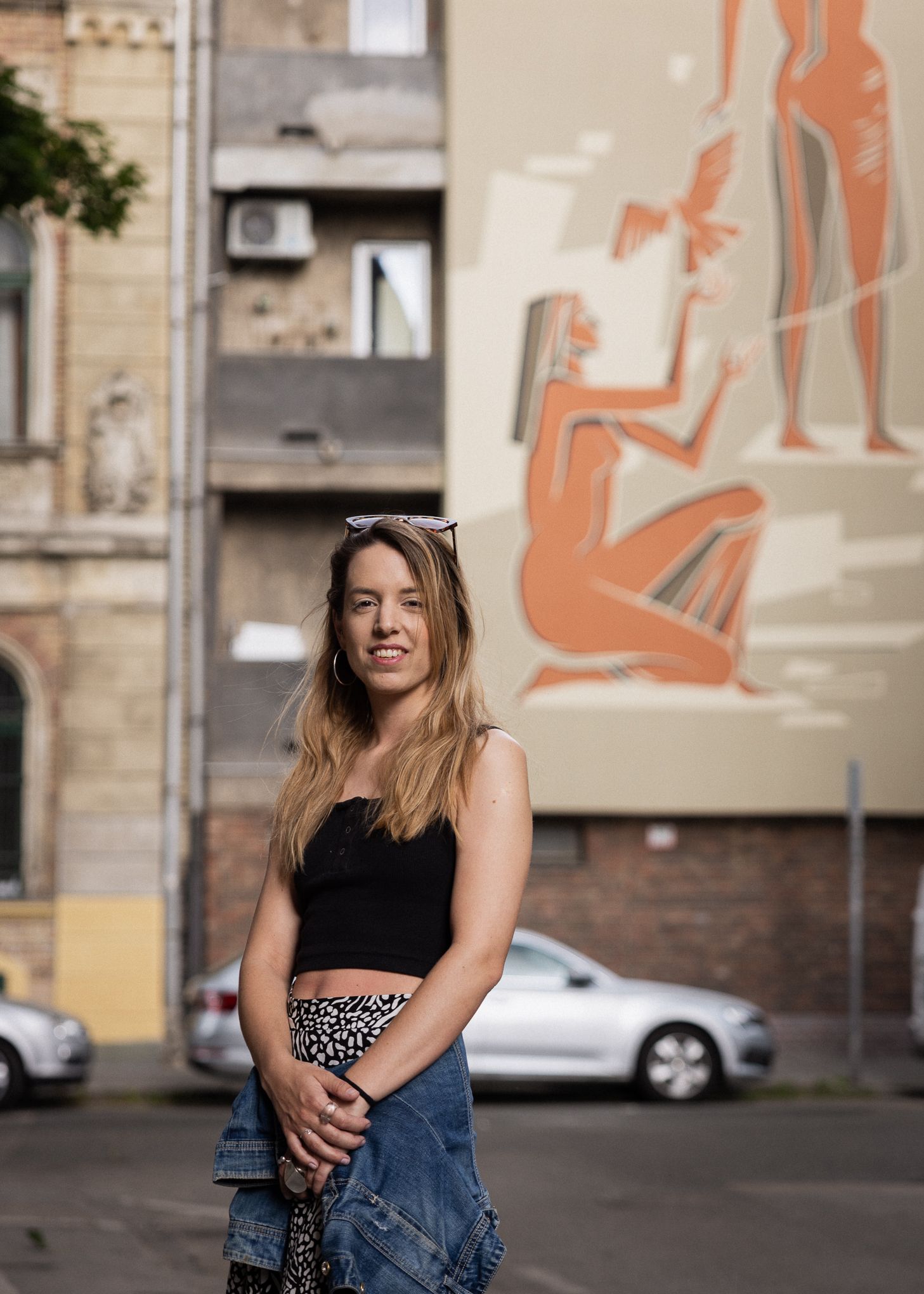
The graphic designer also discovered the firewall mural in József Street by chance, which is actually a transcription of a sgraffito from 1963. The mural was based on a work by the artist János Somogyi entitled Women with Pigeons: as the sgraffito had fallen into disrepair over the decades, the Színes Város (Colorful City—the Transl.) team set out to preserve the originality of the work after the thermal insulation of the building. “I was also intrigued by this work because I hadn’t really seen a mural of this quality before. With firewalls, it’s easy to slip into kitsch, and often their use of color doesn’t fit their immediate surroundings. Although it is no longer visible in person, Lídia Zsanna Zsuffa’s bird, also realized by Színes Város, is another good example of the use of firewalls,” Luca shared.
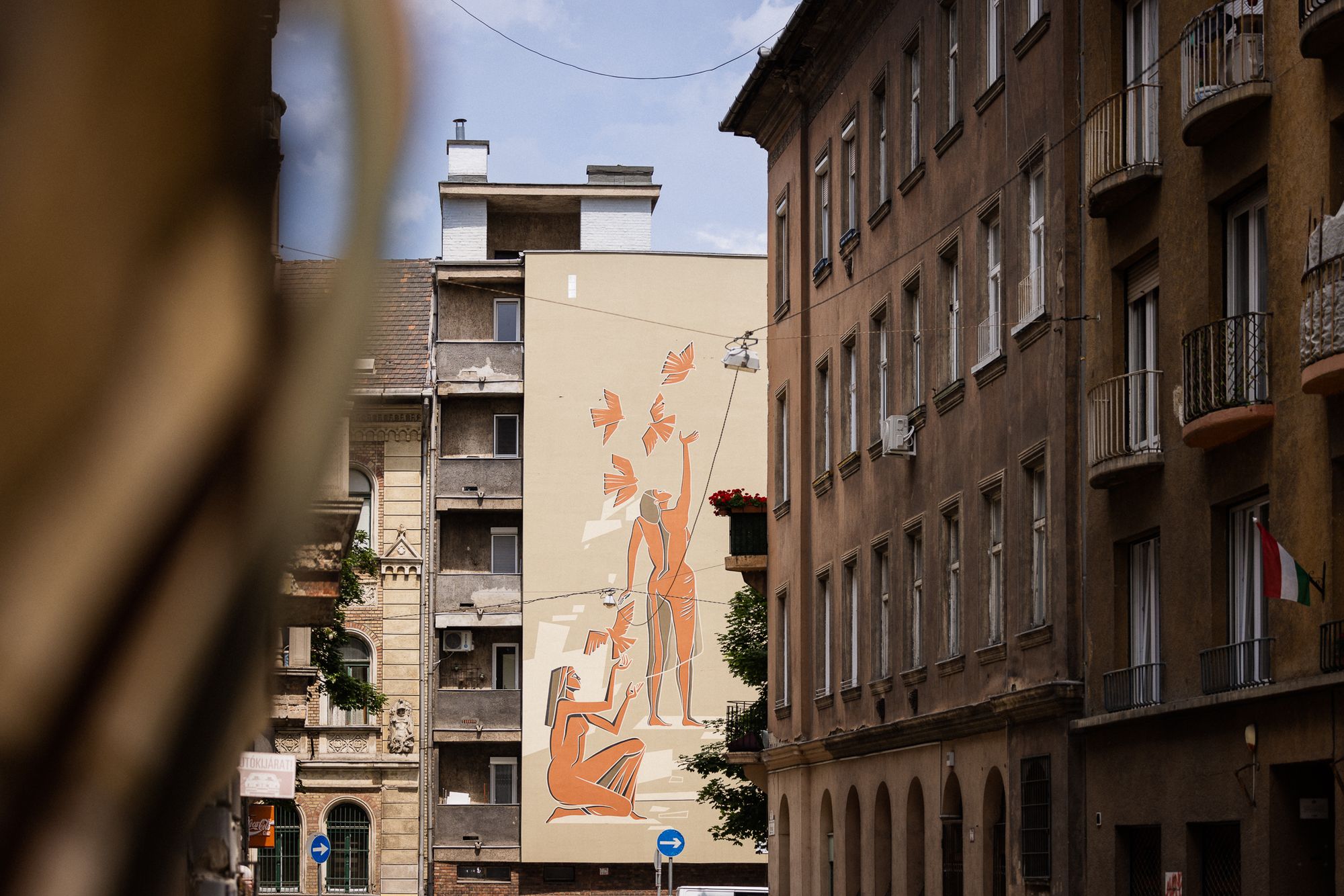
Soon we will dive into the urban history of Budapest under a new topic. In the meantime, discover the previous episode of the Budapest Mosaic, in which Gábor Zsigmond, Deputy General Director of the Museum of Transport, talks about Budapest and one of the key figures in public transport.
Photos: Balázs Mohai









